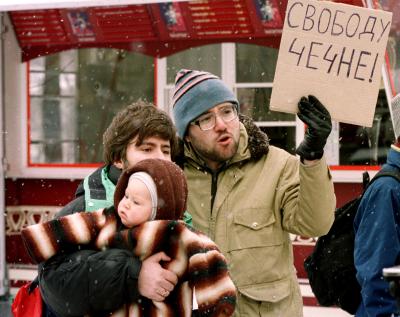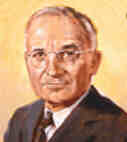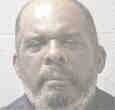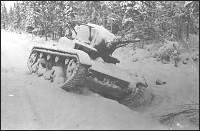^
1988 Panamanian dictator indicted on US drug charges.
Two federal grand juries in Florida announce
indictments of Panama military strongman General Manuel Antonio Noriega
and 16 associates on drug smuggling and money laundering charges. Noriega,
the de facto dictator of Panama since 1983, was charged with smuggling marijuana
into the United States, laundering millions of US dollars, and assisting
Colombia's Medellin drug cartel in trafficking cocaine to America. The Panamanian
leader denied the charges and threatened expulsion of the 10,000 US service
personnel and their families stationed around the Panama Canal. In 1968,
Noriega, then a first lieutenant in the Panamanian National Guard, played
an important part in a coup that ousted President Arnulfo Arias and brought
General Omar Torrijos to power. Early the next year, Torrijos rewarded Noriega
for his loyalty by promoting him to lieutenant colonel and appointing him
chief of military intelligence. In 1970, Noriega, who had first been approached
by the Central Intelligence Agency (CIA) while a promising military student
in the early 1960s, went on the payroll of the CIA. The United States used
Noriega as a check against the left-leaning Torrijos and as an informer
on Central American revolutionaries, the Colombian drug cartels, and communist
Cuba, which Torrijos, though not a Marxist himself, admired and visited.
Noriega, meanwhile, developed his G-2 intelligence agency into a feared
secret police force and became involved in the drug trade. The US government
was aware of his drug trafficking, and in 1977 he was removed from the CIA
payroll.
However, in 1981, the United
States organized and financed the anti-Sandinista Contras in Nicaragua,
and Noriega was brought back into the CIA fold. For a salary of close to
$200'000 a year, Noriega provided intelligence about the Sandinistas and
Cubans to the Americans and aided the Contras in their drug-trafficking
efforts. In July 1981, Omar Torrijos was killed in a plane crash, and Colonel
Noriega became chief of staff to General Rubén Darío Paredes, head of the
National Guard. For two years, military and civilian leader struggled to
gain the upper hand. In 1983, Paredes resigned and control of the military
and the country passed to Noriega. Noriega unified the armed forces into
the Panamanian Defense Forces (PDF), promoted himself to the rank of general,
and consolidated his rule. Under his regime, political repression and corruption
became widespread. In 1984, he held a presidential election, but when Arnulfo
Arias won another apparent victory, Noriega tampered with the returns and
gave the election to Nicolás Ardito Barletta, who became a puppet president.
Still, Noriega enjoyed the continued support of the Reagan administration,
which valued his aid in its efforts to overthrow Nicaragua's Sandinista
government.
In 1986, just months before
the outbreak of the Iran-Contra affair, allegations arose concerning Noriega's
history as a drug trafficker, money launderer, and CIA employee. Most shocking,
however, were reports that Noriega had acted as a double agent for Cuba's
intelligence agency and the Sandinistas. The US government disowned Noriega,
and his supporters staged protests against the American presence in Panama.
Meanwhile, the dictator cracked down on growing political opposition in
Panama. In February 1988, Noriega was indicted by federal grand juries in
Tampa and Miami, and Panamanian President Eric Arturo Delvalle attempted
to dismiss Noriega. Delvalle was himself dismissed by the Noriega-led National
Assembly. In March 1988, the United States froze all Panamanian assets in
US banks and imposed sanctions, and the same month an attempted coup by
a handful of anti-Noriega PDF officers was crushed by loyal PDF soldiers.
During the next year, tensions between Americans and Noriega supporters
in Panama continued to grow, and the United States increased its economic
sanctions. In May 1989, Noriega annulled a presidential election that would
have made Guillermo Endara president, and demonstrators protesting the fraud
were attacked by the Noriega-subsidized Dignity Battalions. In response,
US President George Bush ordered additional US troops to the Panama Canal
Zone and urged US civilians to return to the United States. In October,
another coup attempt by anti-Noriega PDF soldiers failed, and on December
15 the Noriega-led assembly declared the dictator the official chief executive
while recognizing that a state of war existed with the United States.
The next day, an off-duty US Marine officer
was shot to death at a PDF roadblock. US forces in Panama were put on high
alert, and on December 17 President Bush authorized Operation Just Cause
— the US invasion of Panama to overthrow Noriega. On December 20, 9,000
US troops joined the 12,000 US military personnel already in Panama and
were met with scattered resistance from the PDF. By December 24, the PDF
was crushed, the United States held most of the country, and Noriega sought
asylum with the Vatican nuncio in Panama City. Meanwhile, Endara had been
made president by US forces, and he ordered the PDF dissolved. On January
3, Noriega surrendered and was taken to Howard Air Force Base, where he
was arrested by US Drug Enforcement Agency officials for his grand jury
indictments. On January 4, he arrived in Florida to await his trial. The
US invasion of Panama cost the lives of only 23 US soldiers and three US
civilians. Some 150 PDF soldiers were killed along with an estimated 500
Panamanian civilians. The Organization of American States and the European
Parliament both formally protested the invasion, which they condemned as
a flagrant violation of international law. Noriega's criminal trial began
in 1991, and he pleaded innocent. On April 9, 1992, he was found guilty
on eight counts of drug trafficking, racketeering, and money laundering,
marking the first time in history that a US jury had convicted a foreign
leader of criminal charges. He was sentenced to 40 years in federal prison.
General Manuel Antonio Noriega, the
de facto dictator of Panama, is indicted by a federal grand jury in Miami,
Florida, on drug trafficking charges. The American court charges him with
assisting various drug cartels in their trafficking of illegal drugs to
the United by offering them the use of airstrips in exchange for millions
of dollars in payment. During the 1960s, Noriega, a rising figure in the
Panamanian military, was recruited by the US Central Intelligence Agency
(CIA) to assist in the American struggle against the spread of communism
in Central America. During the 1970s, General Noriega became involved in
drug trafficking and the US government distanced itself from the general.
However, in 1981, Omar Torrijos, the dictatorial president of Panama, was
killed in a plane crash and Noriega became the effective ruler of Panama.
As Panamanian dictator, Noriega supported American initiatives in the Panama
Canal Zone and Central America, and in turn was praised by White House officials,
although a special Senate committee concluded in 1983 that Panama was a
major center for drug trafficking and the laundering of drug funds. In 1984,
Noriega employed violence and fraud to force the election of Nicolas Ardito
Barletta as president, defeating the popular candidate Arnulfo Arias, who
opposed the domination of Noriega and the US government in Panama. In the
late 1980s, the spread of communism became less of a threat in Central America,
and Noriega began to fall out of favor with US government. In February of
1988, Noriega was indicted on drug trafficking charges, and in May of 1989,
he defrauded another presidential election, defeating Guillermo Endara,
a candidate from the business opposition. Endara, more likely than Noriega
to respect American economics interests, immediately replaced Noriega as
the Panamanian leader favored by the US government. Noriega’s long history
of drug trafficking and human rights abuse were made public and economic
sanctions were imposed against Panama. On December 20, 1989, US President
George Bush ordered an invasion of Panama and Noriega’s Panamanian Defense
Forces were promptly crushed. The dictator himself sought asylum in the
Vatican annunciate in Panama City, but after ten days he surrendered and
was extradited to the US to stand trial on drug trafficking charges and
Guillermo Endara was declared Panamanian president. In 1992, Noriega was
found guilty and sentenced to forty years in a federal prison. |
 2000
Right-wing leader Joerg Haider told a deeply divided Austria not to worry
about international sanctions, saying the new governing coalition that included
his Freedom Party would soon prove its democratic credentials to the world.
2000
Right-wing leader Joerg Haider told a deeply divided Austria not to worry
about international sanctions, saying the new governing coalition that included
his Freedom Party would soon prove its democratic credentials to the world.


 2003
Israeli Staff Sergeant
2003
Israeli Staff Sergeant  Baker
[photo >] was a forklift operator at the plant from 1955
until June of 1995 but was fired by Navistar after being implicated
in an internal theft scheme involving four other Navistar employees.
It was not until 8 January 8 2001 that Baker, having pled guilty was
convicted in federal court of conspiracy to commit interstate theft.
He was ordered to pay $195'000 restitution and was to begin a five-month
prison term on 6 February 2001, which was to be followed by five months
of home confinement. Baker had been convicted in May 1998 of criminal
sexual assault of a family member in 1997. Two other charges were
dropped in exchange for a guilty plea. He was sentence to 90 days
of "periodic imprisonment" followed by probation and was required
to register as a sex offender.
Baker
[photo >] was a forklift operator at the plant from 1955
until June of 1995 but was fired by Navistar after being implicated
in an internal theft scheme involving four other Navistar employees.
It was not until 8 January 8 2001 that Baker, having pled guilty was
convicted in federal court of conspiracy to commit interstate theft.
He was ordered to pay $195'000 restitution and was to begin a five-month
prison term on 6 February 2001, which was to be followed by five months
of home confinement. Baker had been convicted in May 1998 of criminal
sexual assault of a family member in 1997. Two other charges were
dropped in exchange for a guilty plea. He was sentence to 90 days
of "periodic imprisonment" followed by probation and was required
to register as a sex offender. Karelian Isthmus: following a preliminary artillery bombardment, the enemy
launches heavy assaults in the morning in the areas of Summa, Marjapellonmäki
and Lake Hatjalahti with the support of over one hundred assault tanks.
Despite overwhelming numerical superiority the attack becomes bogged down
and ends in the destruction of 22 assault tanks. [one of them in photo]
Karelian Isthmus: following a preliminary artillery bombardment, the enemy
launches heavy assaults in the morning in the areas of Summa, Marjapellonmäki
and Lake Hatjalahti with the support of over one hundred assault tanks.
Despite overwhelming numerical superiority the attack becomes bogged down
and ends in the destruction of 22 assault tanks. [one of them in photo] 1626
Marie de Rabutin-Chantal, marquise de Sévigné.
1626
Marie de Rabutin-Chantal, marquise de Sévigné.